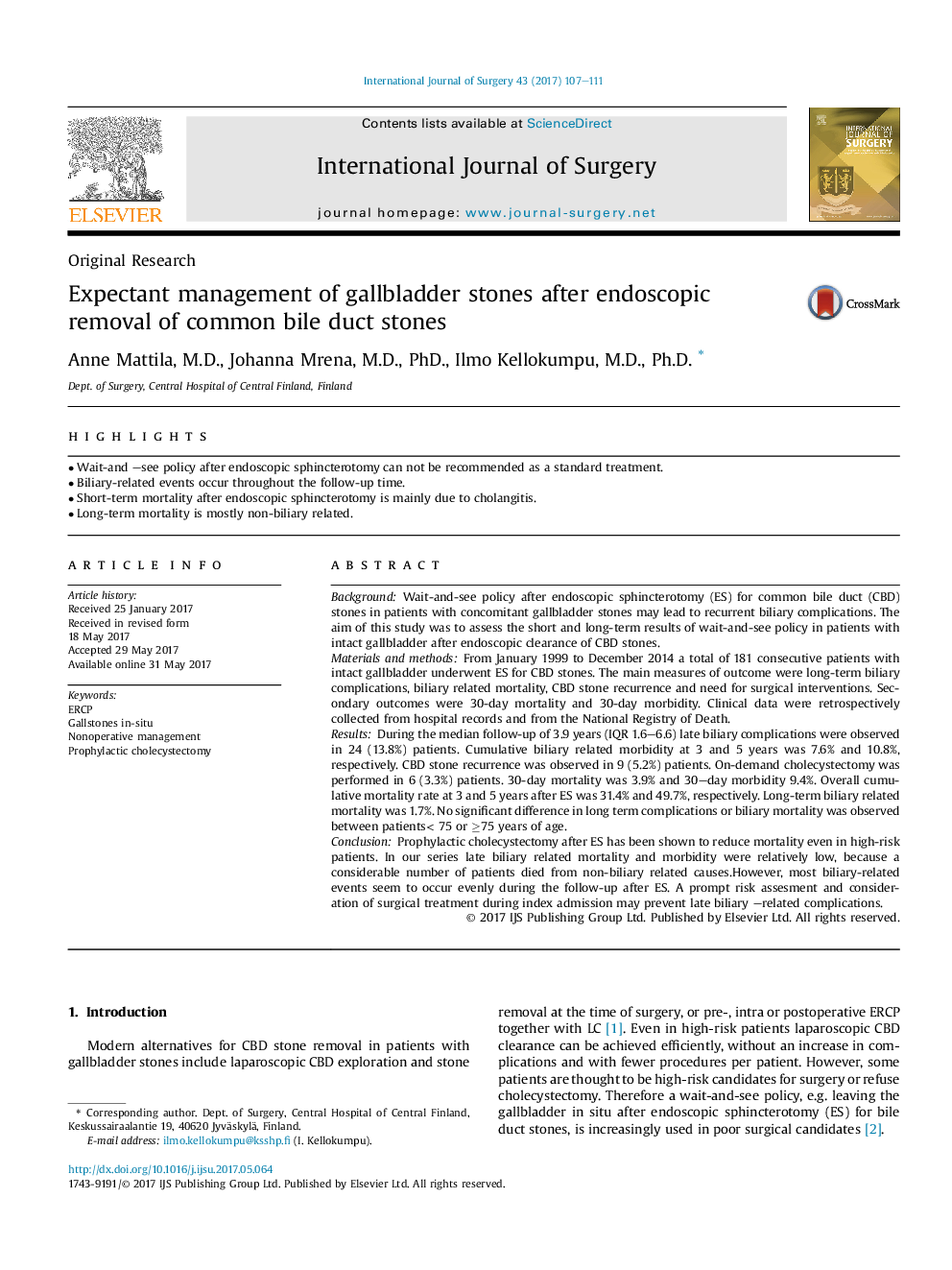| کد مقاله | کد نشریه | سال انتشار | مقاله انگلیسی | نسخه تمام متن |
|---|---|---|---|---|
| 5732143 | 1611935 | 2017 | 5 صفحه PDF | دانلود رایگان |
- Wait-and -see policy after endoscopic sphincterotomy can not be recommended as a standard treatment.
- Biliary-related events occur throughout the follow-up time.
- Short-term mortality after endoscopic sphincterotomy is mainly due to cholangitis.
- Long-term mortality is mostly non-biliary related.
BackgroundWait-and-see policy after endoscopic sphincterotomy (ES) for common bile duct (CBD) stones in patients with concomitant gallbladder stones may lead to recurrent biliary complications. The aim of this study was to assess the short and long-term results of wait-and-see policy in patients with intact gallbladder after endoscopic clearance of CBD stones.Materials and methodsFrom January 1999 to December 2014 a total of 181 consecutive patients with intact gallbladder underwent ES for CBD stones. The main measures of outcome were long-term biliary complications, biliary related mortality, CBD stone recurrence and need for surgical interventions. Secondary outcomes were 30-day mortality and 30-day morbidity. Clinical data were retrospectively collected from hospital records and from the National Registry of Death.ResultsDuring the median follow-up of 3.9 years (IQR 1.6-6.6) late biliary complications were observed in 24 (13.8%) patients. Cumulative biliary related morbidity at 3 and 5 years was 7.6% and 10.8%, respectively. CBD stone recurrence was observed in 9 (5.2%) patients. On-demand cholecystectomy was performed in 6 (3.3%) patients. 30-day mortality was 3.9% and 30-day morbidity 9.4%. Overall cumulative mortality rate at 3 and 5 years after ES was 31.4% and 49.7%, respectively. Long-term biliary related mortality was 1.7%. No significant difference in long term complications or biliary mortality was observed between patients< 75 or â¥75 years of age.ConclusionProphylactic cholecystectomy after ES has been shown to reduce mortality even in high-risk patients. In our series late biliary related mortality and morbidity were relatively low, because a considerable number of patients died from non-biliary related causes.However, most biliary-related events seem to occur evenly during the follow-up after ES. A prompt risk assesment and consideration of surgical treatment during index admission may prevent late biliary -related complications.
Journal: International Journal of Surgery - Volume 43, July 2017, Pages 107-111
